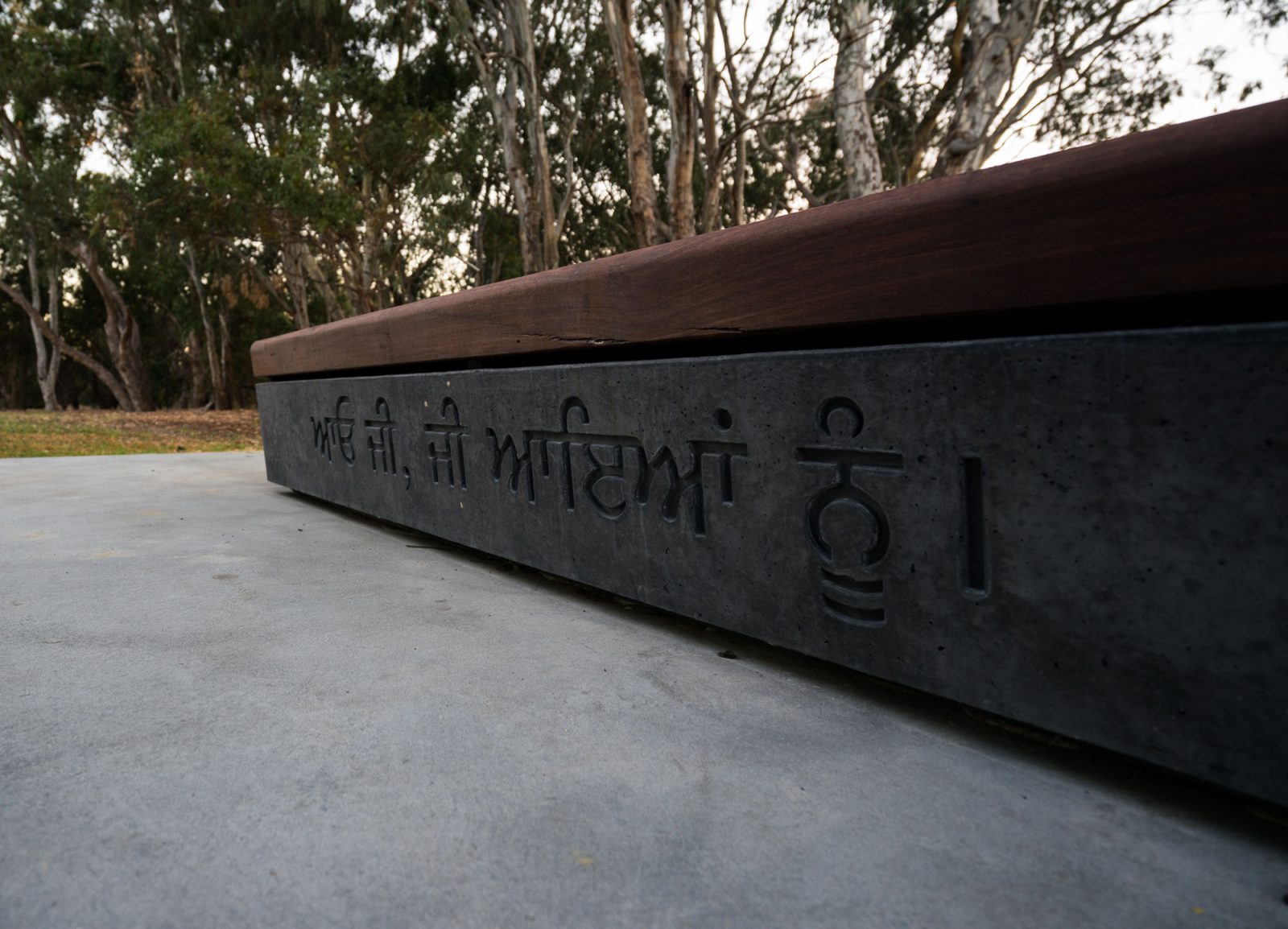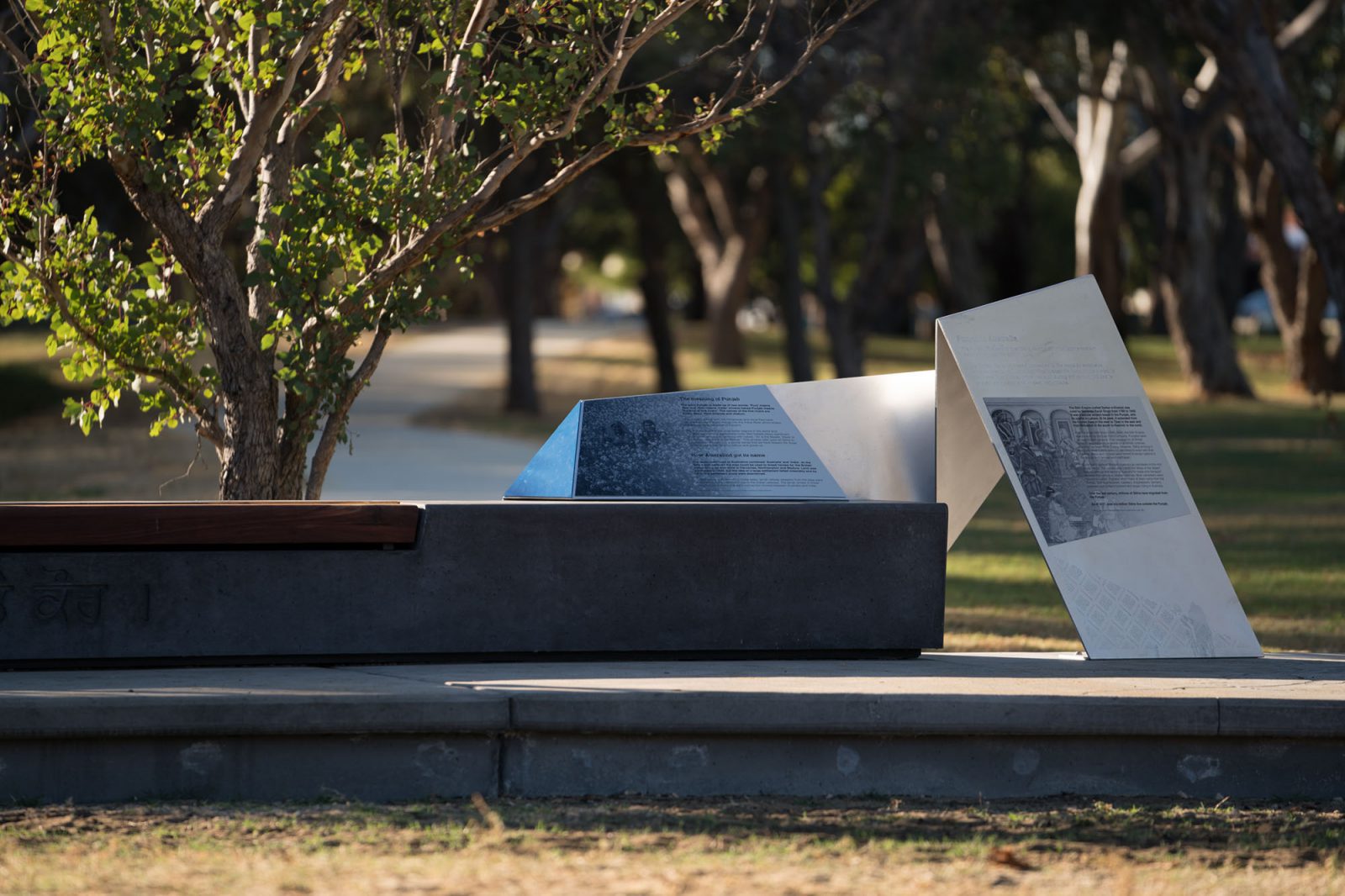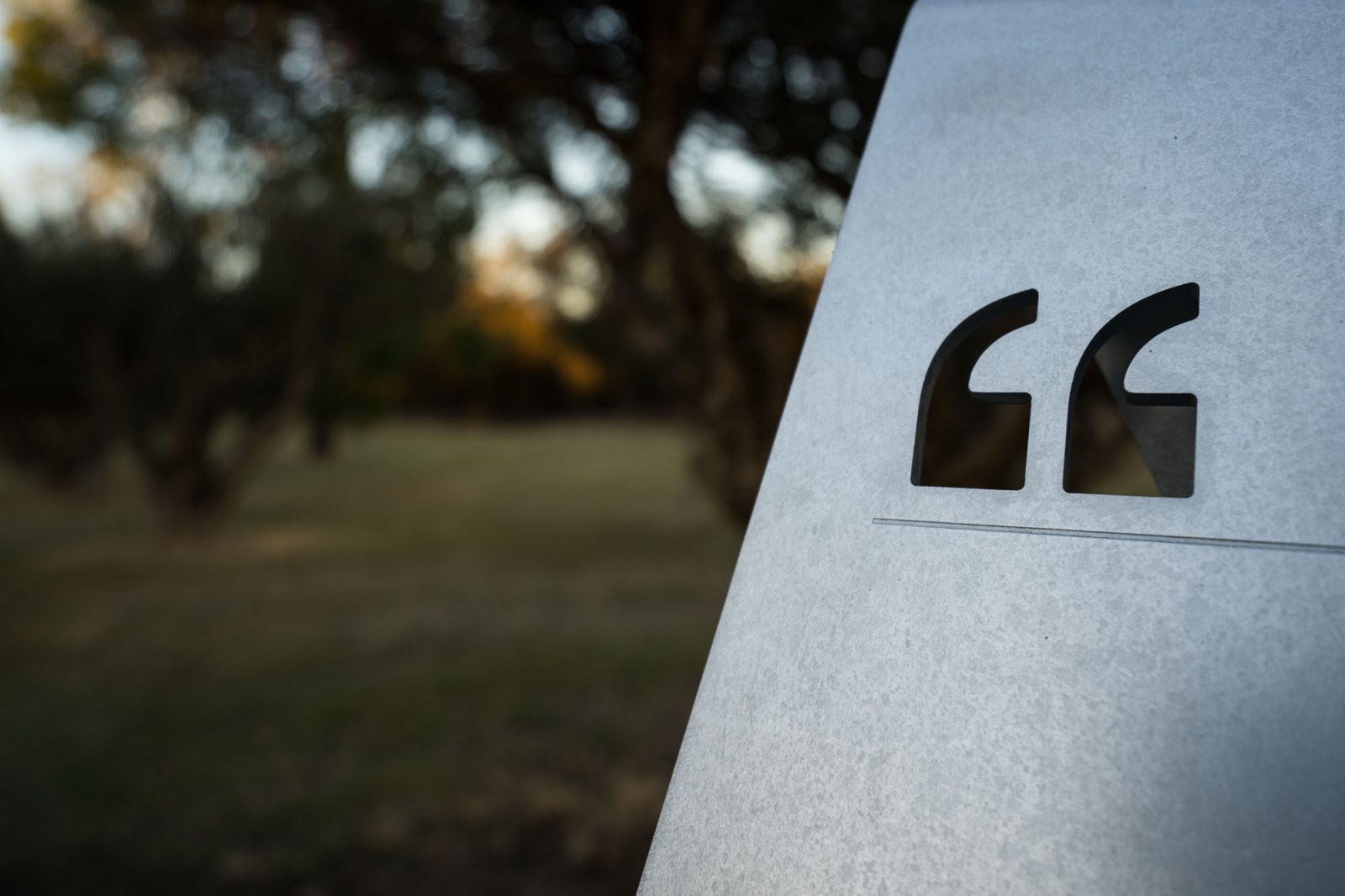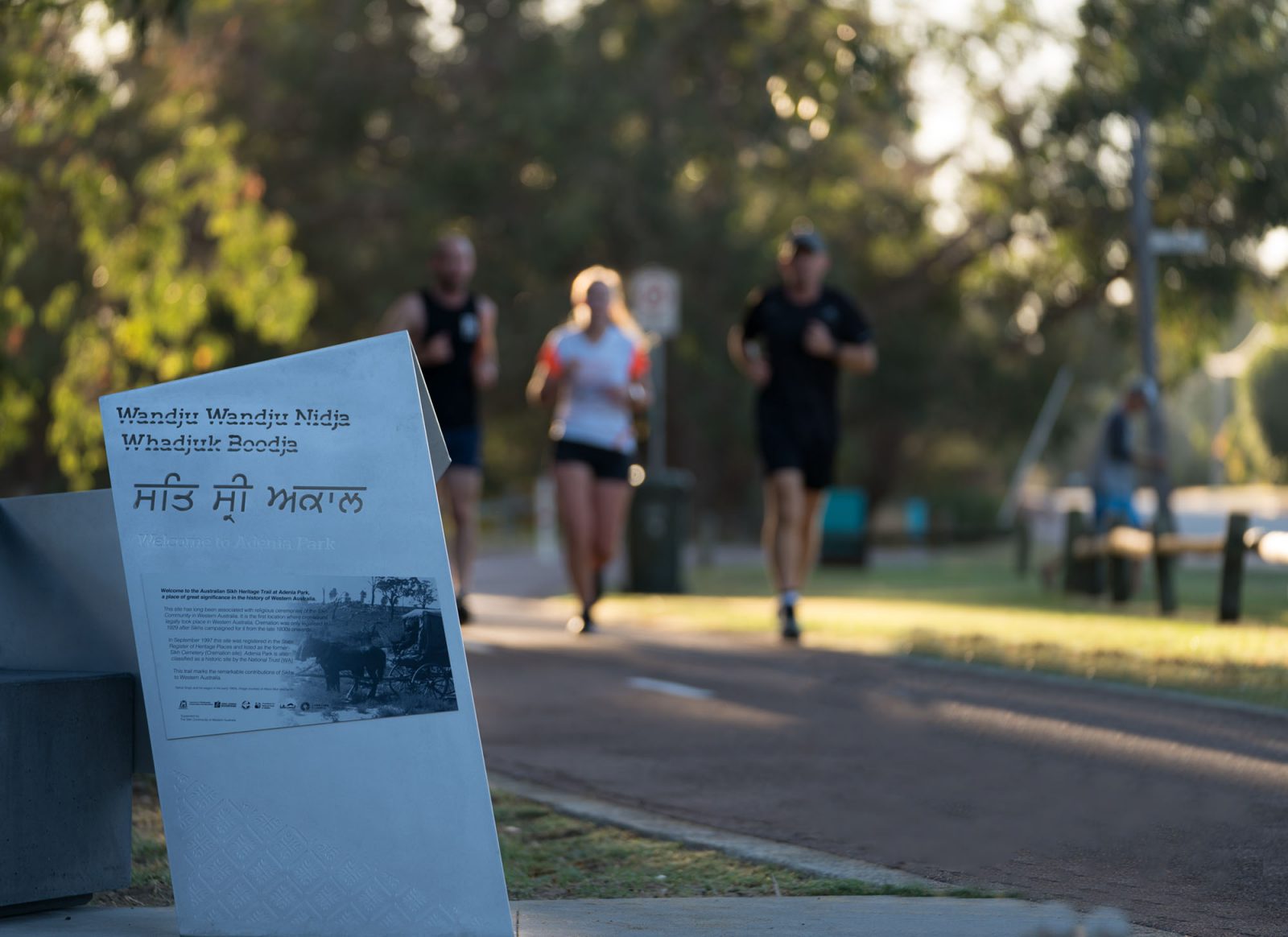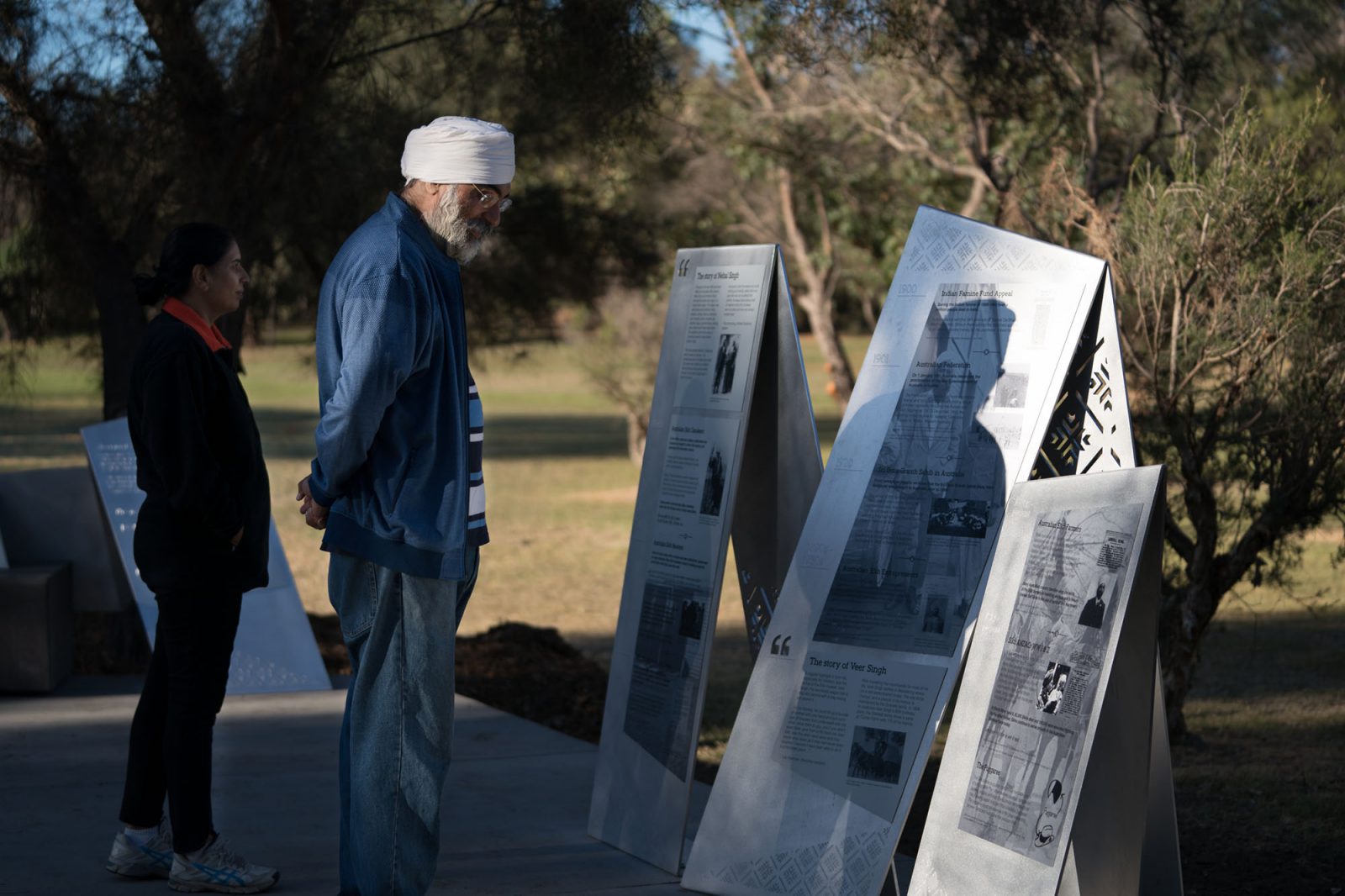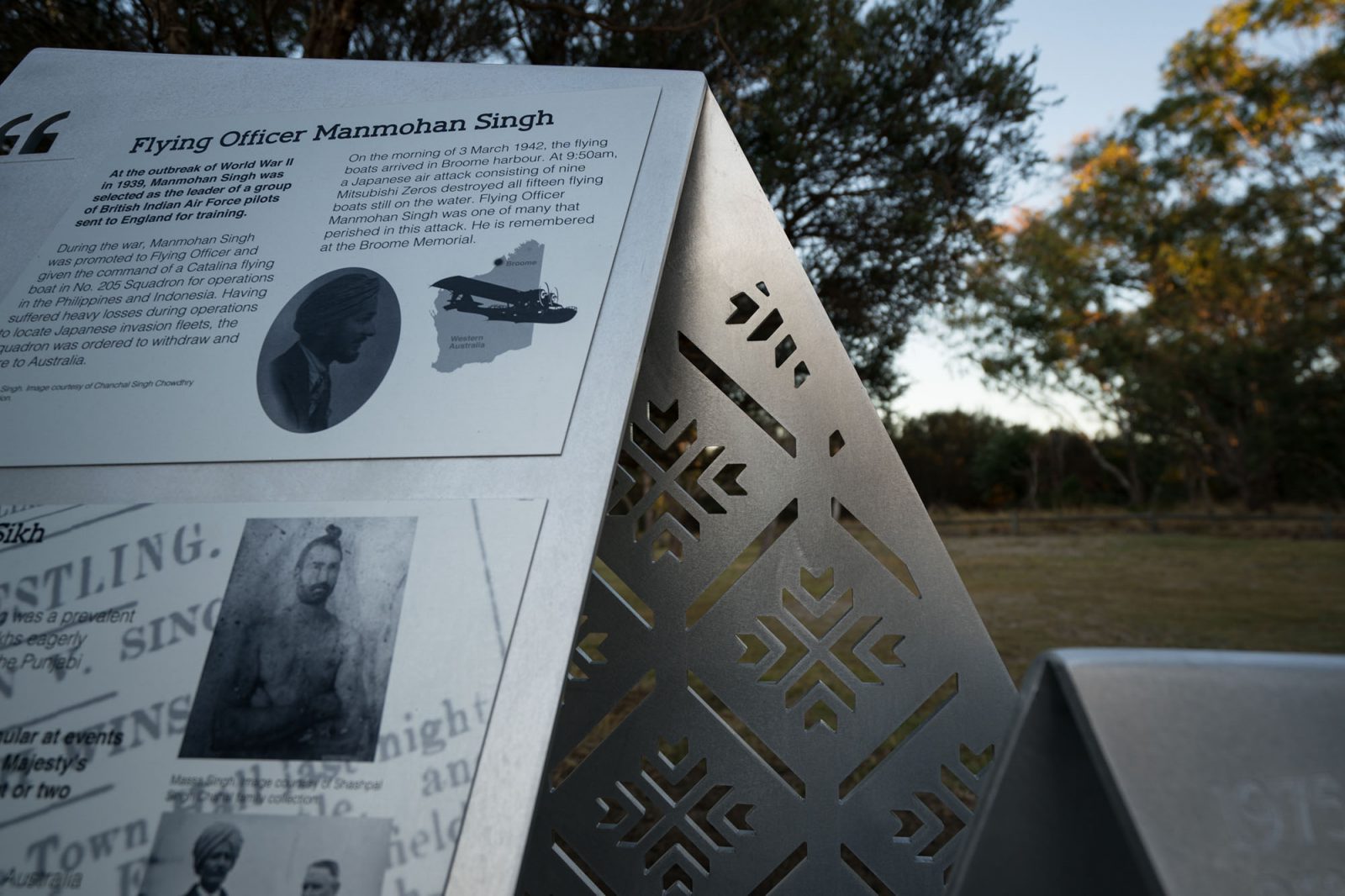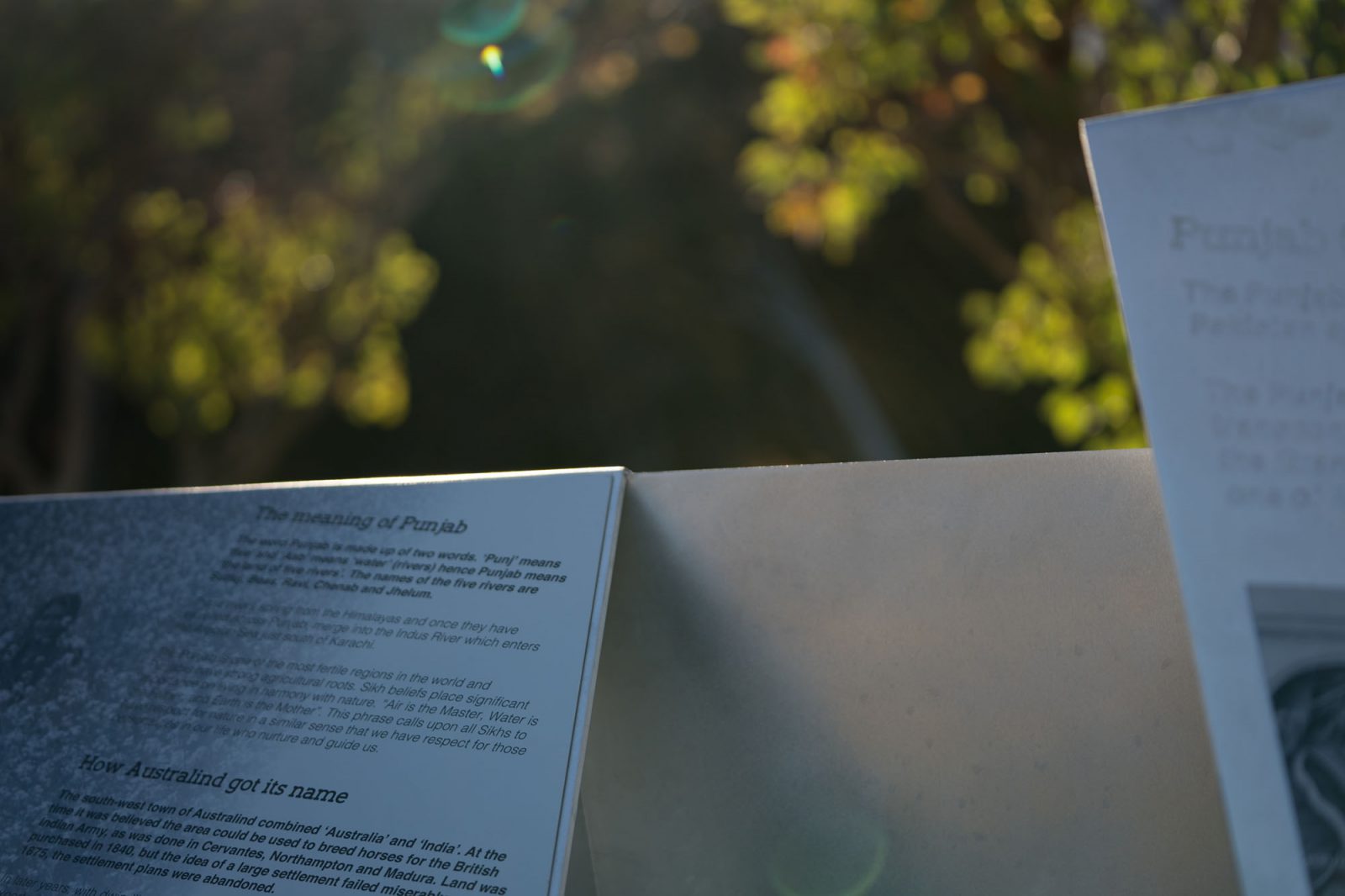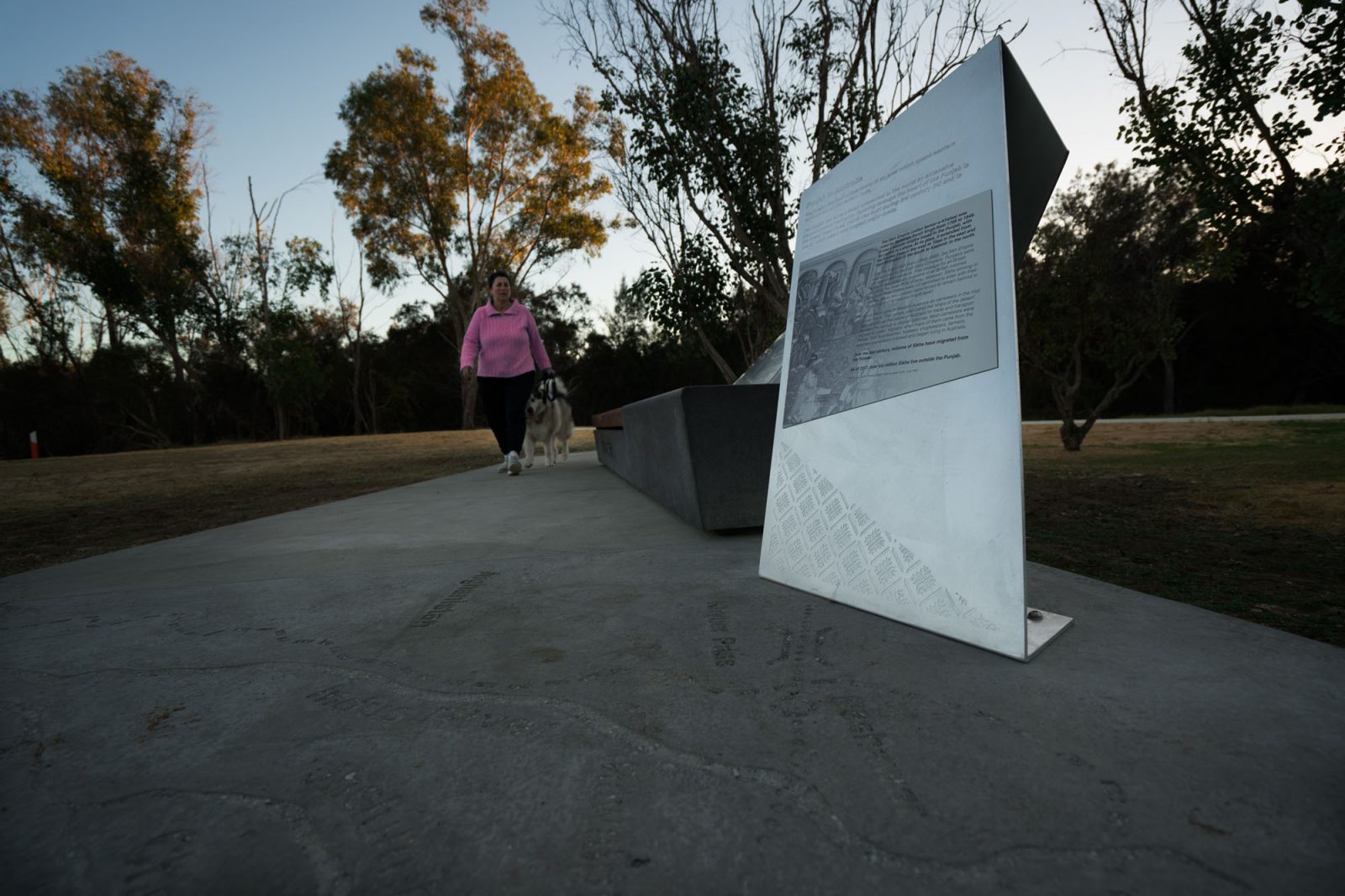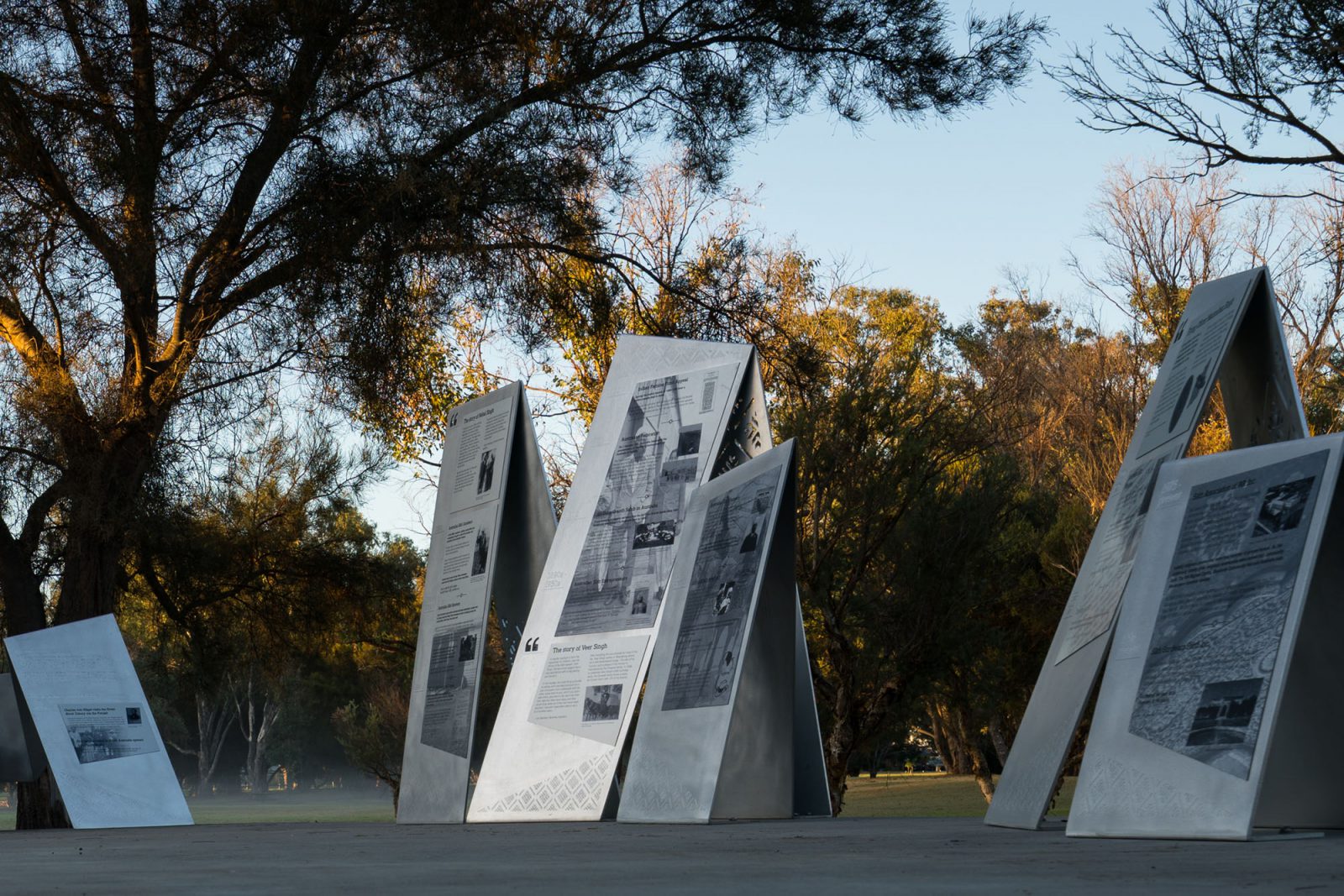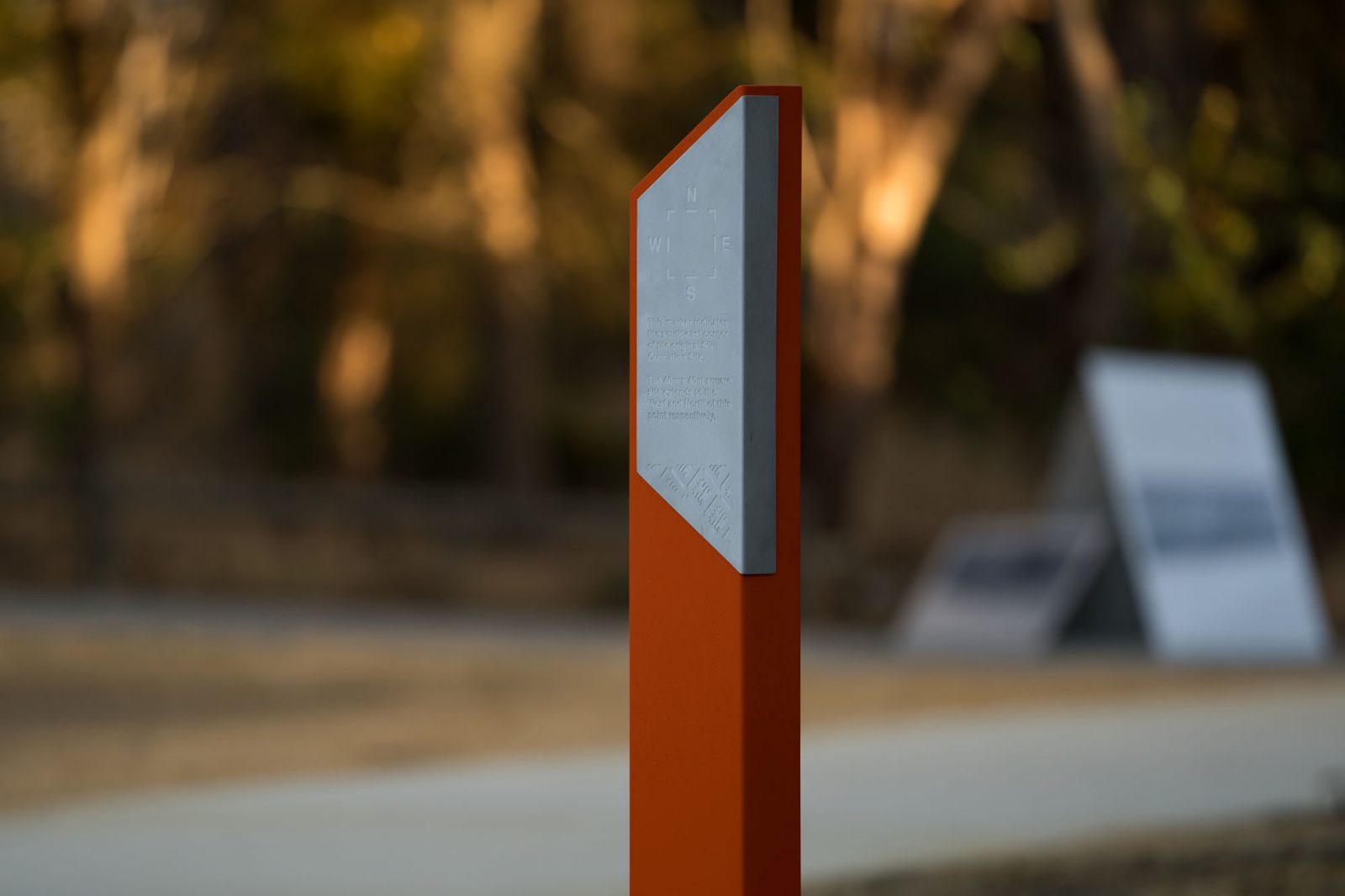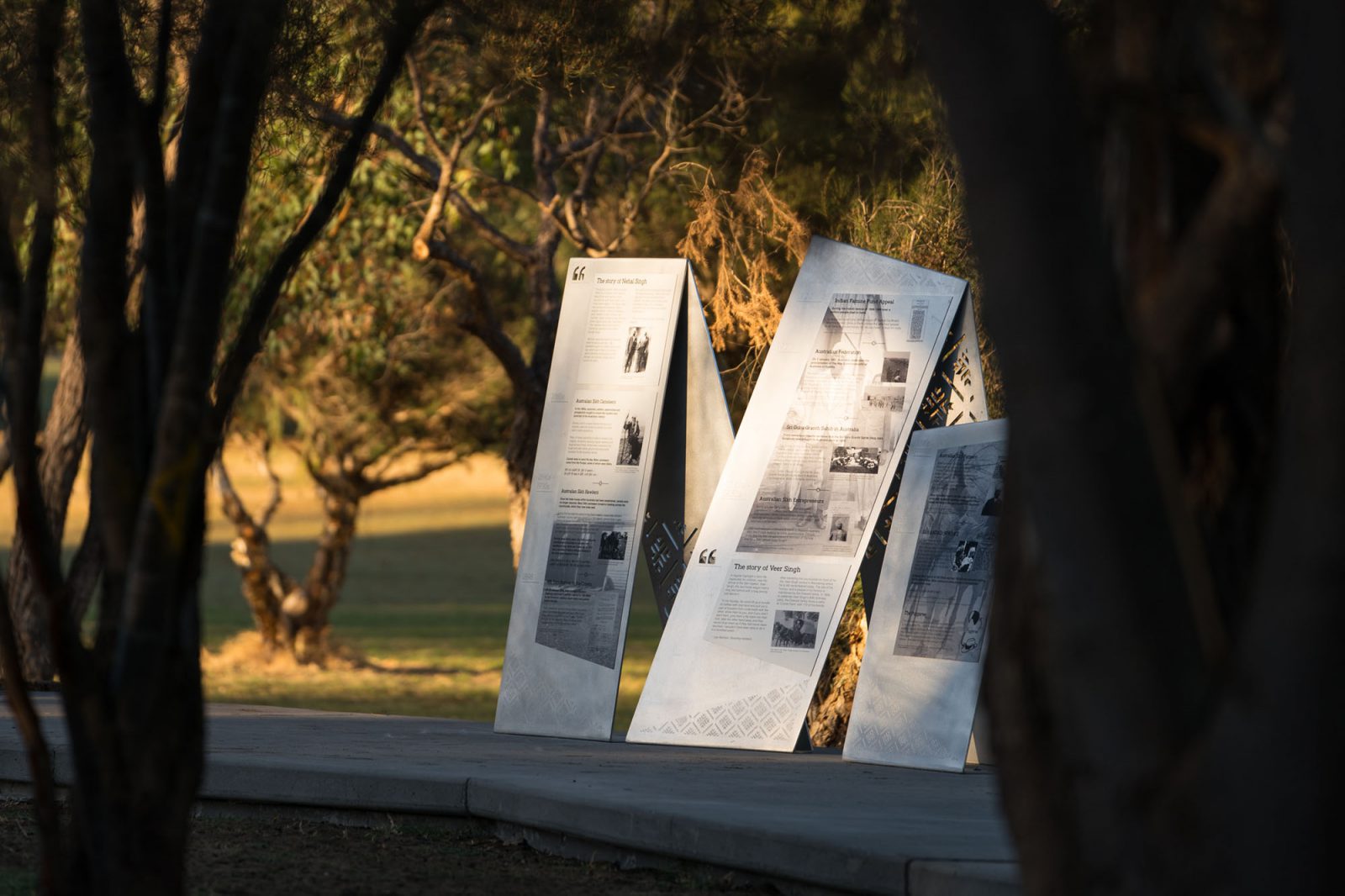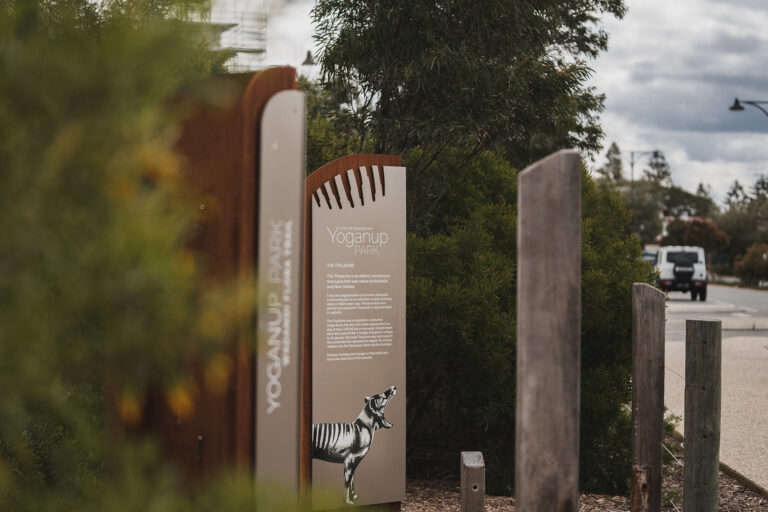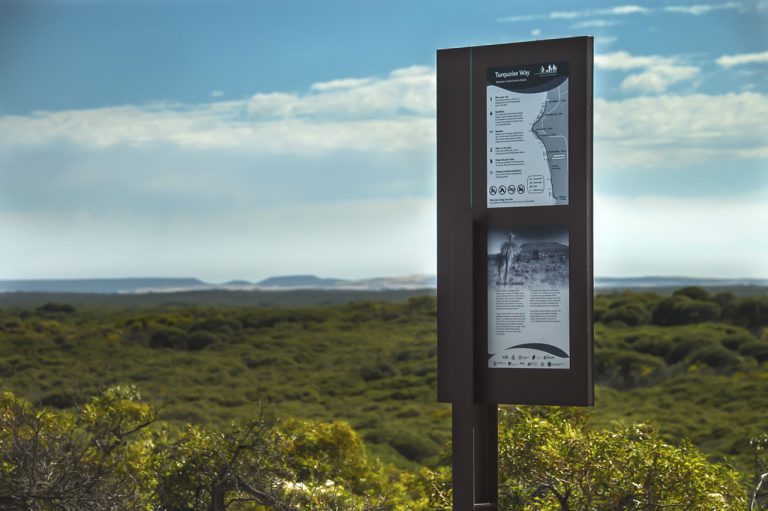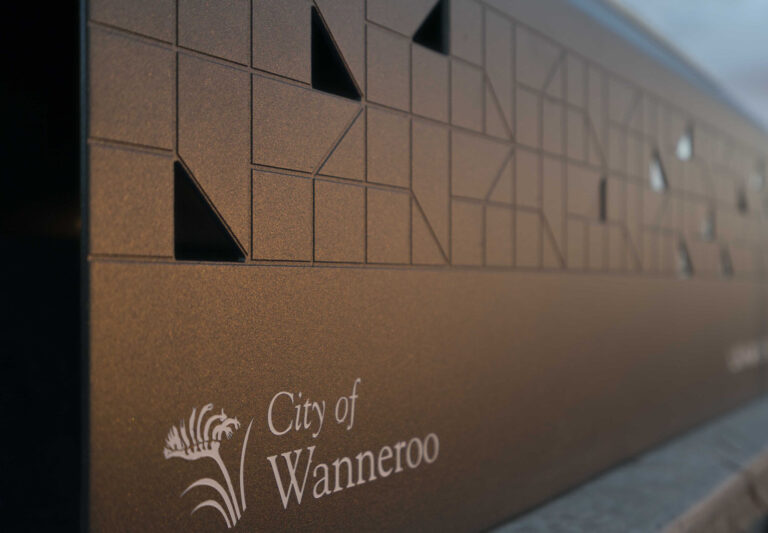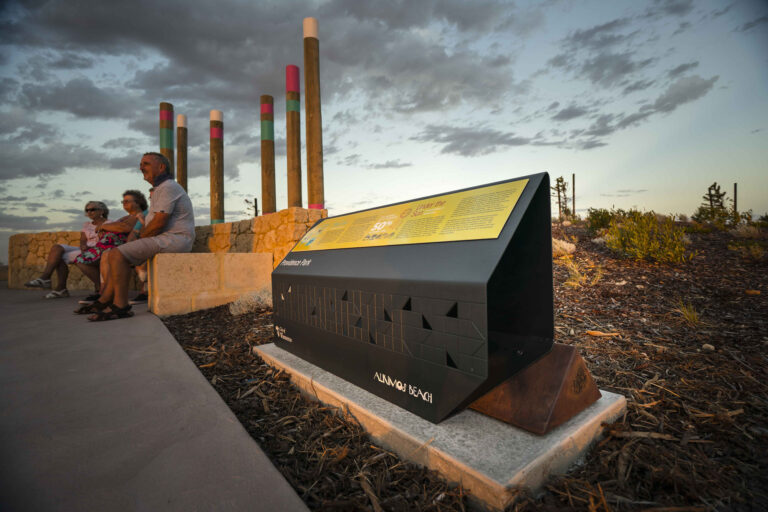It’s a quiet morning in the local neighbourhood park – there’s a group of runners going by, dogs are out for an early walk, and the birds are singing in dewy trees. At the surface, Adenia park is just another local park but its significance in our state’s history has been unveiled.
In 1929 it was the first place where the Sikh community was legally permitted to perform cremation ceremonies – a very important part of funeral rites, known as Antam Sanskar in Sikh culture. The interpretive signage trail shares stories such as the importance of local Sheoak trees, courageous enlistment of Sikh men during World Wars I and II and the many unique aspects of Sikh culture.
As you wander through the trail, various angled interpretive signage nodes that appear to defy gravity emerge to share these stories. The angled interpretive signage takes influence from the Sikh dastaar or pugaree, the mandatory Sikh headwear commonly known as the turban, this influence is reflected as the material crosses over itself to reach its final form. Benches with embedded Sikh Gurmukhi script offer a place of quiet reflection among the surrounding environment, while interpretive markers indicate significant places to visitors, allowing a connection to the vibrant Sikh culture alongside a ground map of the Punjab region to illustrate the origins of the Sikh people.
The new Australian Sikh Heritage Trail interpretive signage is embedded in the heart of Adenia Park, recognising and celebrating the Sikh community’s momentous history, and remarkable contributions to our state.
